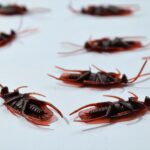Most air tools and equipment require lubrication to prevent friction and wear. The lubricator injects a slight quantity of tool oil into the air stream.
An FRL consists of an air filter to clean the compressed air of water and coarse dirt, a regulator to control pressure, and a lubricator to inject a metered amount of lubricant into the air stream. Most have a sight glass to monitor the oil level.
Clean The Filter
An FRL combines three main elements — a filter to remove oil, water, and dust from the airline, a pressure regulator that controls air pressure, and a lubricator that delivers a controlled amount of pneumatic lubricant into the system. In contrast, the micro-fog lubricator atomizes the oil, only passing the desired quantity of lubricant downstream.
Pneumatic equipment relies on clean, dry, and lubricated air for optimal performance and longevity. Without the proper care, pneumatic equipment can quickly become clogged and worn, resulting in costly downtime and repairs. A filter regulator lubricator Charlotte NC is an easy, efficient solution to this problem and prevents downtime by keeping the compressed air flowing correctly in your system.
Adjust The Tension
FRLs — or filter-regulator-lubricator appliances — are vital to preparing clean air for use in pneumatic system tools. They consist of three components — an air line filter to remove contaminants such as dust, water, and oil; a regulator that controls pressure; and a lubricator that continuously injects oil mist into the airflow.
A glass indicator shows you when the lubricator injects oil into the air. You can adjust the lubricator’s tension by using the control knob (often black) on top of it to tighten or loosen it. Once the lubricator is set, you can turn on a tool or equipment to test it.
Check The Oil Level
Pneumatic equipment often requires lubrication to work well and avoid friction that can wear down components. Suppose you need many pneumatic tools or equipment. In that case, a filter regulator lubricator, also known as an FRL, can help you avoid the hassle of regularly remembering to oil every component in your system.
The lubricator is usually fitted with a sight glass to check the oil level; and a fill plug for easy refilling.
Many manufacturers preassemble filters, regulators, and lubricators into combination units that can reduce installation times and costs. FRLs are available in various body sizes and connection port types, making it simple to customize your systems to suit your needs. They are commonly used for applications that require a high flow of compressed air to operate cylinders and actuators.
Check The Pressure
FRLs combine an air filter, regulator, and lubricator in one unit to ensure that compressed air is clean and adequately lubricated for pneumatic tools and equipment. The air filter removes moisture, oil, and dirt from the compressor output. At the same time, the pressure regulator controls the pressure within an air system so that down-line tools and equipment do not exceed their maximum operating pressures.
The lubricator is then used to inject a controlled amount of lubricating oil into the compressed air stream. This lubricates the moving parts in your tools and equipment to reduce friction and wear.
A manual adjusting valve sets the rate at which the lubricator drips and a sight glass or window enables you to monitor the output. A fill plug allows the refilling of the reservoir, usually made from polycarbonate. Lubricators have a more comprehensive range of flow than regulators or filters, but their pressure drop increases quite rapidly as the airflow through the venturi increases.


